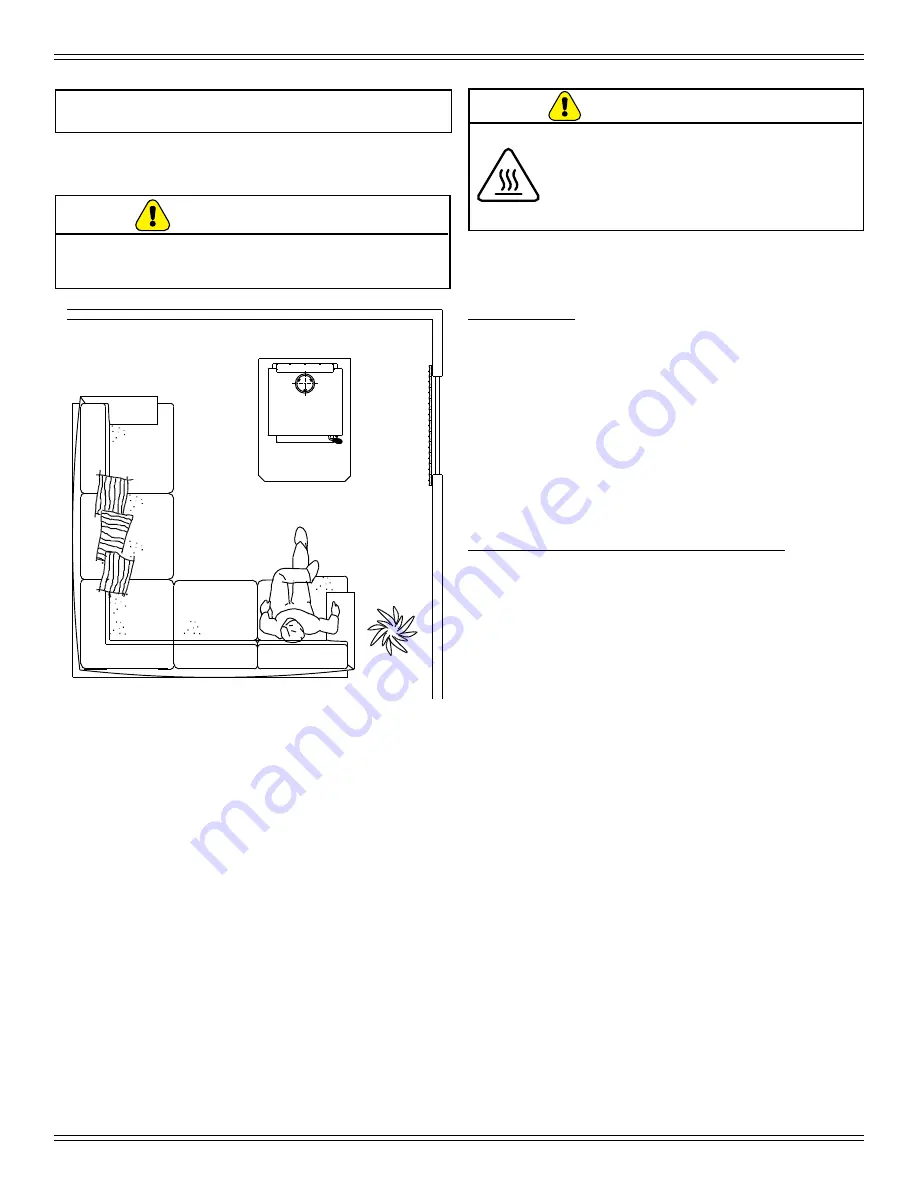
15
March 26, 2020
7039-802B
Negative pressure results from the imbalance of air available
for the appliance to operate properly. It can be strongest in
lower levels of the house.
Causes include:
•
Exhaust fans (kitchen, bath, etc.)
• Range hoods
•
Combustion air requirements for furnaces, water
appliances and other combustion appliances
• Clothes dryers
• Location of return-air vents to furnace or
air conditioning
•
Imbalances of the HVAC air handling system
• Upper level air leaks such as:
- Recessed lighting
- Attic hatch
- Duct leaks
To minimize the effects of negative air pressure:
• Install the outside air kit with the intake facing prevailing
winds during the heating season
•
Ensure adequate outdoor air for all combustion
appliances and exhaust equipment
• Ensure furnace and air conditioning return vents are
not located in the immediate vicinity of the appliance
• Avoid installing the appliance near doors, walkways or
small isolated spaces
•
Recessed lighting should be a “sealed can” design
• Attic hatches weather stripped or sealed
• Attic mounted duct work and air handler joints and
seams taped or sealed
K. Negative Pressure
J. Clear Space
Figure 15.1
Maintain 4 ft (1.22m) clearance to
combustible in front of appliance
WARNING
Asphyxiation Risk.
• Negative pressure can cause spillage
of combustion fumes, soot and
carbon monoxide.
• Appliance needs to draft properly
for safety.
WARNING
Do NOT place combustible objects in front of the
appliance. High temperatures may ignite clothing,
furniture or draperies.
NOTE:
Do NOT place combustible objects within
4 ft (1.2m) of the front of appliance
(Figure 15.1)
.
• Mantel:
Avoid placing candles and other heat-sensitive objects
on mantel or hearth. Heat may damage these objects.
















































